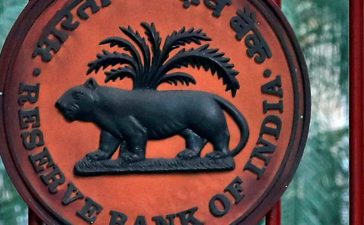Good morning. The race for secretary of the Treasury is hot. Prediction markets are still favouring Scott Bessent, but three dark horses have emerged: Apollo CEO Marc Rowan, former Fed member Kevin Warsh and Senator Bill Hagerty. Who do you like? Email us: robert.armstrong@ft.com and aiden.reiter@ft.com.
Unhedged will be off next week for some much needed post-election, pre-Trump administration vacation. We will be back in your inboxes on Monday, December 2 — well rested, well fed and full of insight.
Chrome
Back in August a federal judge ruled that Google — Alphabet’s internet search and advertising business — is a monopoly. Shares in Alphabet barely moved. Yesterday, the prosecution presented its list of proposed remedies. This time the market took notice. Alphabet shares fell 5 per cent. The Department of Justice wants Google to:
-
Divest the Chrome browser
-
Stop paying other companies such as Apple to be their default search engine
-
Forswear acquiring or investing in other search tools or browsers
-
Make public all search data
-
Give advertisers and consumers more control and transparency
We don’t know the odds that any of this is going to happen or, if it does, whether Google will be able to reshape its business to avoid financial repercussions. The history of antitrust enforcement in the case of Microsoft suggests that, in industries that tend towards natural monopoly, it is very hard to get the toothpaste back into the tube.
But in this case, the DoJ could have a powerful cudgel: the judge could threaten to separate the Android operating system, which is Google’s anchor in mobile computing. Android powers around 70 per cent of the global phone market. According to the DoJ, it chose not to go after severing it now in part to preserve it as an incentive (according to Bill Baer, the former head of the DoJ’s antitrust division, it may also have focused on Chrome because it is a “neater and cleaner” split than Android).
Let’s suppose remedies go through: Chrome is separated, payments are stopped, data is shared. How much does it change the search market? Google might well maintain its market share, making the ruling essentially a revenue transfer from Apple back to Google. Things will change only if someone comes along with a better search product that people want to switch to.
Which leads us to the really interesting question: could Chrome’s next owner use it as a platform for competing with Google? Chrome is the most widely used browser in the world. Its user base is so valuable that Google gives it away for free. It could stay independent, like Mozilla’s Firefox, but building its own ad business from scratch would take time. But it could be bought by a big AI player (Meta? OpenAI? Anthropic? Amazon?). If they layer a nifty new AI search engine into Chrome, they might have something.
Another judge could rule that no browser is allowed to have any default search engine — not just Google. That would make Chrome a much less attractive acquisition. It’s harder to imagine a competing AI search engine really knocking Google off its perch without a default advantage.
If the DoJ is serious about making search competitive, it should not stand in the way of another big tech buying Chrome.
(Reiter and Armstrong)
Does personal savings tell us anything useful?
Earlier this week in our piece about the US consumer, we referred to household savings “falling, albeit slowly”. It has been pointed out to us that we should have been clearer. Savings, as officially defined, is the excess of income over expenditures. It is a flow, not a stock, and this flow is getting a bit smaller; it has not gone negative. Personal savings remains positive, to the tune of about $1tn a year:

That we were imprecise in this way was a reminder that we haven’t thought hard enough about the role of savings in the overall economic picture. We’ve joined the herd of other commentators who assume that if spending is strong while savings is diminishing, that strength will ultimately prove unsustainable. The simple intuition is that a weak flow of savings eventually leaves consumers feeling financially insecure, at which point they reduce consumption.
That notion fuelled a concept that was hot on Wall Street a year or two ago: pandemic excess savings. The argument was that the surprisingly strong economy was the product of pent-up savings, gathered when it was impossible to go out and spend, and then supplemented with stimulus checks. And that when it was all spent, there would be a slowdown. So various economists and analysts got busy calculating how much excess savings there were.
As we wrote back then, this raises methodological problems, including determining the “underlying” savings rate that “excess” savings are in excess of, and modelling how savings, once spent, move through the economy. And now we know there is another problem with the theory. It is pretty clear the excess savings have all been spent, and the economy has not noticed. Here, for example, is the San Francisco Fed’s estimate:

This estimate went negative six months ago. And consumer spending, on most aggregate measures, is still growing merrily. Tellingly, perhaps, the San Fran Fed has lost interest. It stopped tracking the data in September.
Part of the problem with making a big deal of savings, as Skanda Amarnath of Employ America points out, is that savings is the difference between two big aggregate figures, each of them with their own peculiarities and imprecisions. The resulting figure is therefore double peculiar and imprecise. Better, Amarnath thinks, to just look at a range of measures of income and spending and build your arguments about future economic growth from there. And if you want to think about how household balance sheets are likely to affect consumption, look at something like debt payment as a share of disposable income. Looking at savings overcomplicates arguments that are already tricky enough.
Matt Klein of the Overshoot does think the savings data can be handy when used properly. He makes the observation that historically, when asset prices reach highs, savings have tended to fall. But in 1999-2000 and 2005-07, the flow of savings fell well below the long-term trend (and we know what happened next, in both cases). “This is with the idea that when asset values go up a lot, people save less,” he says. But, interestingly, that does not seem to be happening now, even as stock portfolios and home values have risen.
One good read
“Diversification is for people that don’t know what they’re doing.”
FT Unhedged podcast

Can’t get enough of Unhedged? Listen to our new podcast, for a 15-minute dive into the latest markets news and financial headlines, twice a week. Catch up on past editions of the newsletter here.







